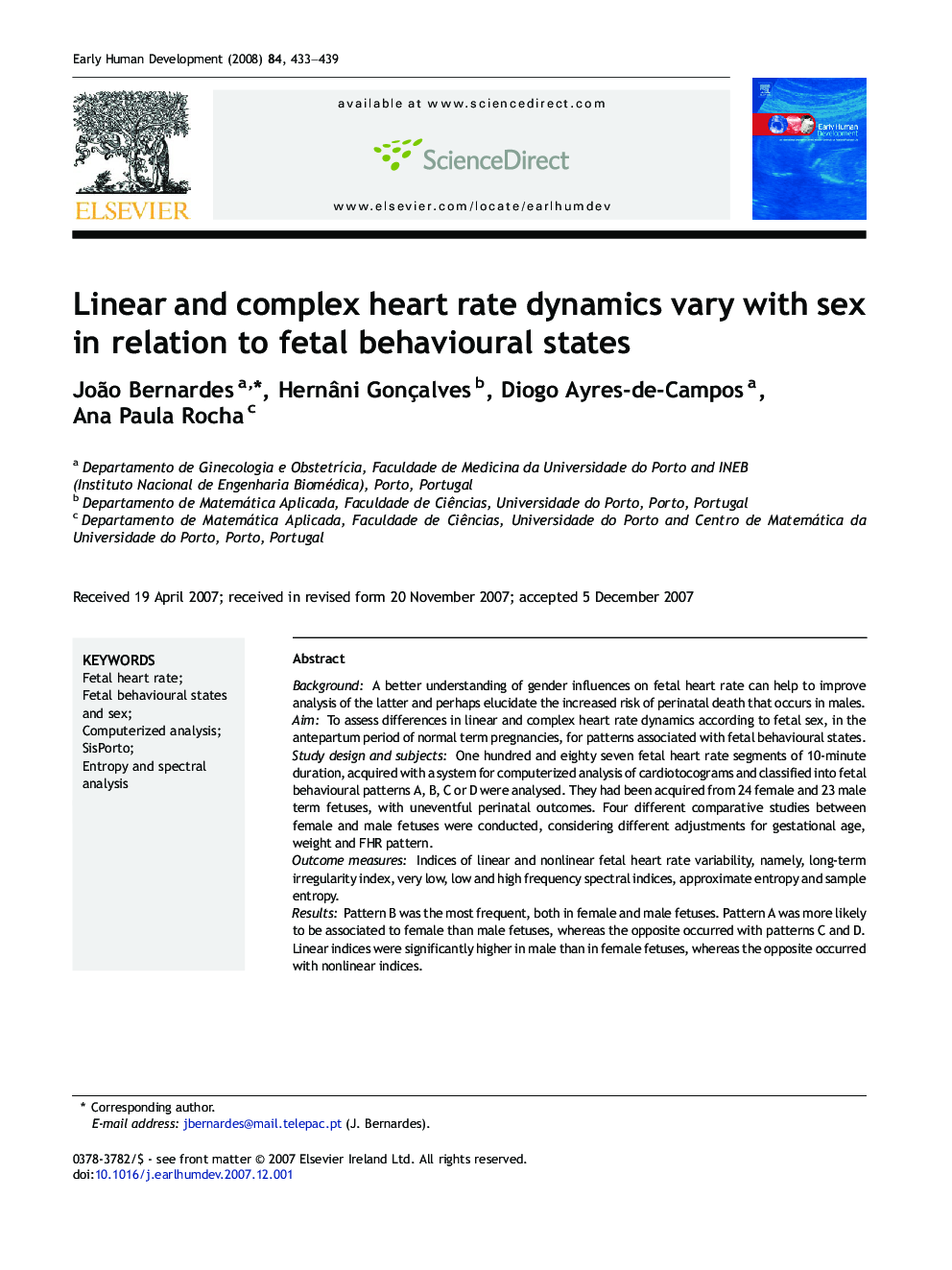| Article ID | Journal | Published Year | Pages | File Type |
|---|---|---|---|---|
| 3917108 | Early Human Development | 2008 | 7 Pages |
BackgroundA better understanding of gender influences on fetal heart rate can help to improve analysis of the latter and perhaps elucidate the increased risk of perinatal death that occurs in males.AimTo assess differences in linear and complex heart rate dynamics according to fetal sex, in the antepartum period of normal term pregnancies, for patterns associated with fetal behavioural states.Study design and subjectsOne hundred and eighty seven fetal heart rate segments of 10-minute duration, acquired with a system for computerized analysis of cardiotocograms and classified into fetal behavioural patterns A, B, C or D were analysed. They had been acquired from 24 female and 23 male term fetuses, with uneventful perinatal outcomes. Four different comparative studies between female and male fetuses were conducted, considering different adjustments for gestational age, weight and FHR pattern.Outcome measuresIndices of linear and nonlinear fetal heart rate variability, namely, long-term irregularity index, very low, low and high frequency spectral indices, approximate entropy and sample entropy.ResultsPattern B was the most frequent, both in female and male fetuses. Pattern A was more likely to be associated to female than male fetuses, whereas the opposite occurred with patterns C and D. Linear indices were significantly higher in male than in female fetuses, whereas the opposite occurred with nonlinear indices.ConclusionsMale fetuses exhibited significantly more linear and significantly less complex fetal heart rate activity than female fetuses, expressing signs of a more active autonomous nervous system and of less active complexity control systems. These aspects may need to be considered when interpreting FHR tracings.
